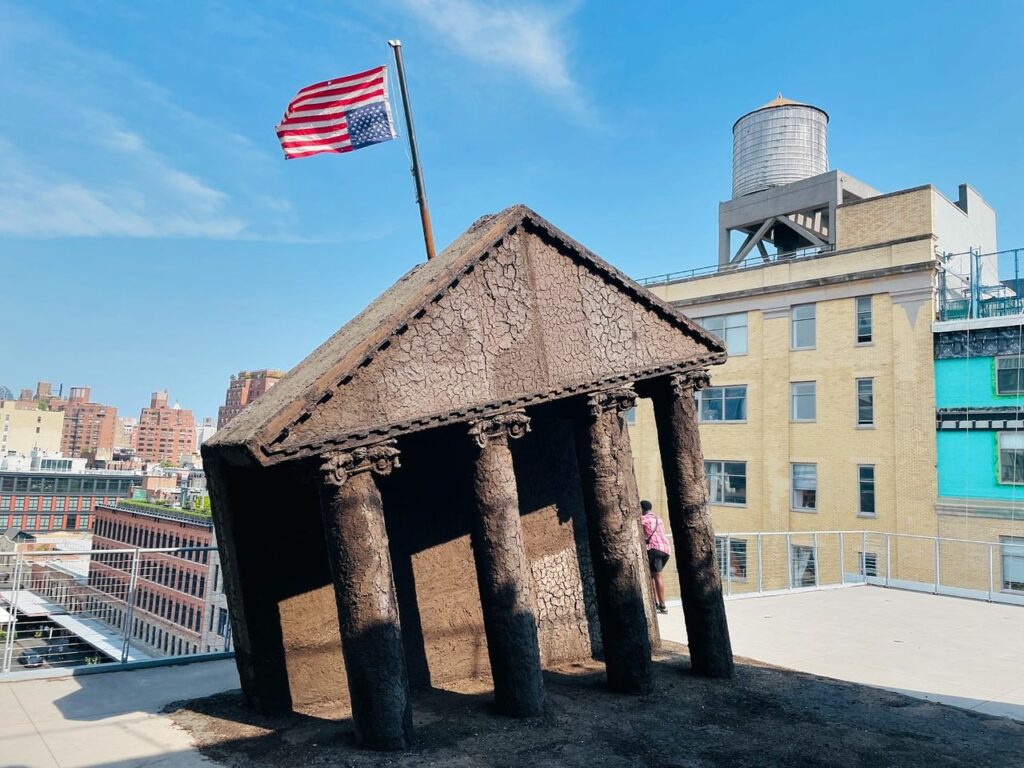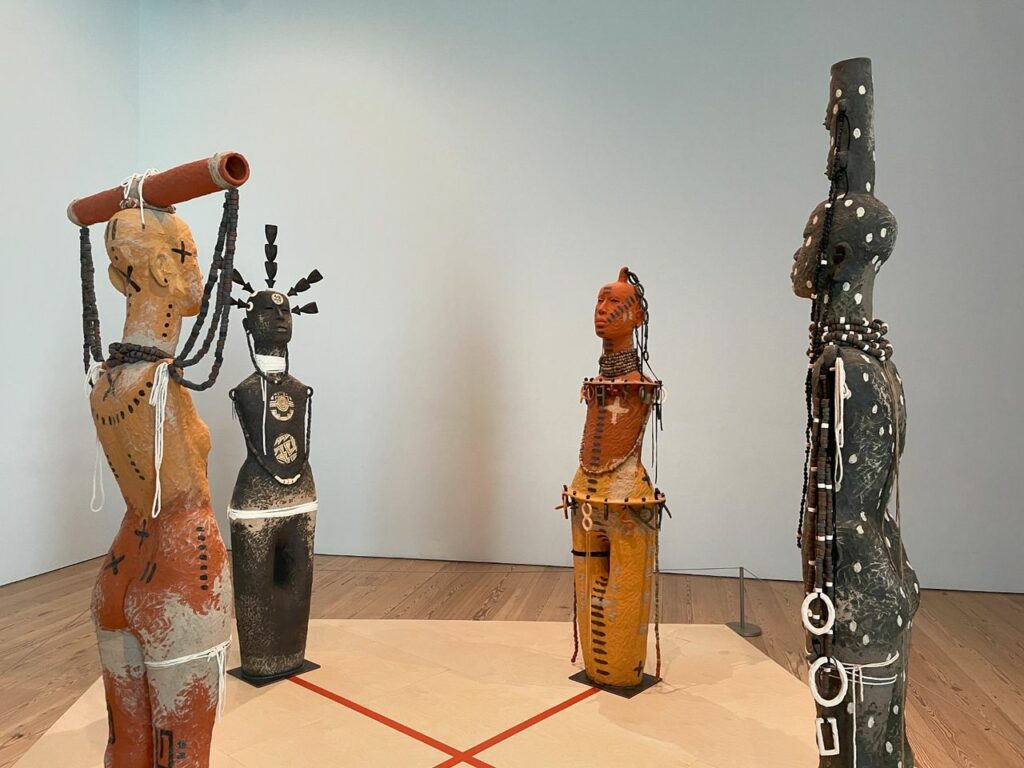3 more artists from the Whitney Biennial that I loved. The last artist in particular has truly moved me to think about our current apocalyptic times in a different way by subverting colonial language and the limited, dismal visions it embodies.
Kiyan Williams, born 1991 in Newark, NJ: In Williams’s outdoor sculpture Ruins of Empire /I or The Earth Swallows the Master’s House, the north facade of the White House, which is composed of earth, leans on one side and sinks into the floor… The labor history embedded in the dirt points to a fragility in our political foundations, while the earth’s erosion embodies a critique of institutionality at a moment when institutions are toppling.
Rose B. Simpson, born 1983, Santa Fe, NM: In Rose B. Simpson’s Daughters: Reverence, four figures gaze at one another, creating a kind of force field of protection and solidarity that stands in contrast to an unstable world. “My lifework,” Simpson has explained, “is a seeking out of tools to use to heal the damages I have experienced as a human being of our postmodern and postcolonial era-objectification, stereotyping, and the disempowering detachment of our creative selves through the ease of modern technology.”
Demian Diné Yazhi’, born 1983 in Gallup, NM, we must stop imagining apocalypse/genocide + we must imagine liberation, 2024: As a poet and activist, Dine Yazhi’ has thought about how to use a colonizer’s language against colonialism, noting that they “want to see more poetry at protests.” Written in red neon, the text in this work emerges from the artist’s reflections on Indigenous resistance movements. Diné Yazhi calls on people working toward liberation to avoid predicting futures rooted in a Euro-Western “romanticization and addiction with apocalypse,” speculating that accepting catastrophe as a given leads to “writing our own demise or prisons.” Instead, they advocate for writing stories of liberation, finding alternate ways to work through oppressive moments as a collective.


